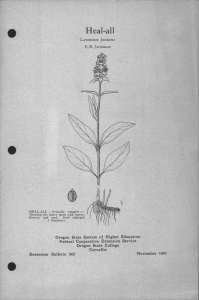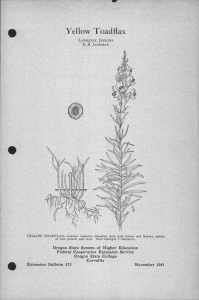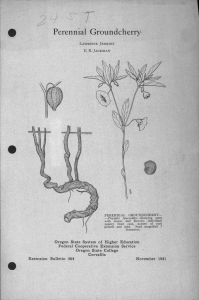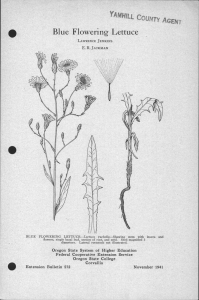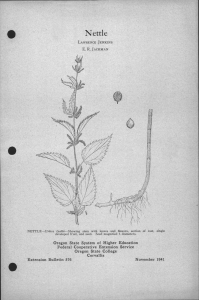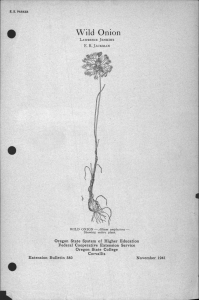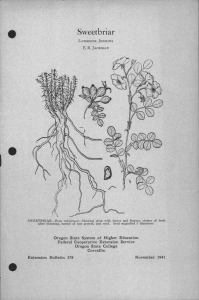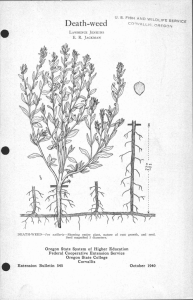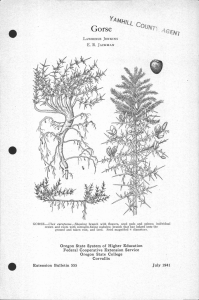Chicory
advertisement
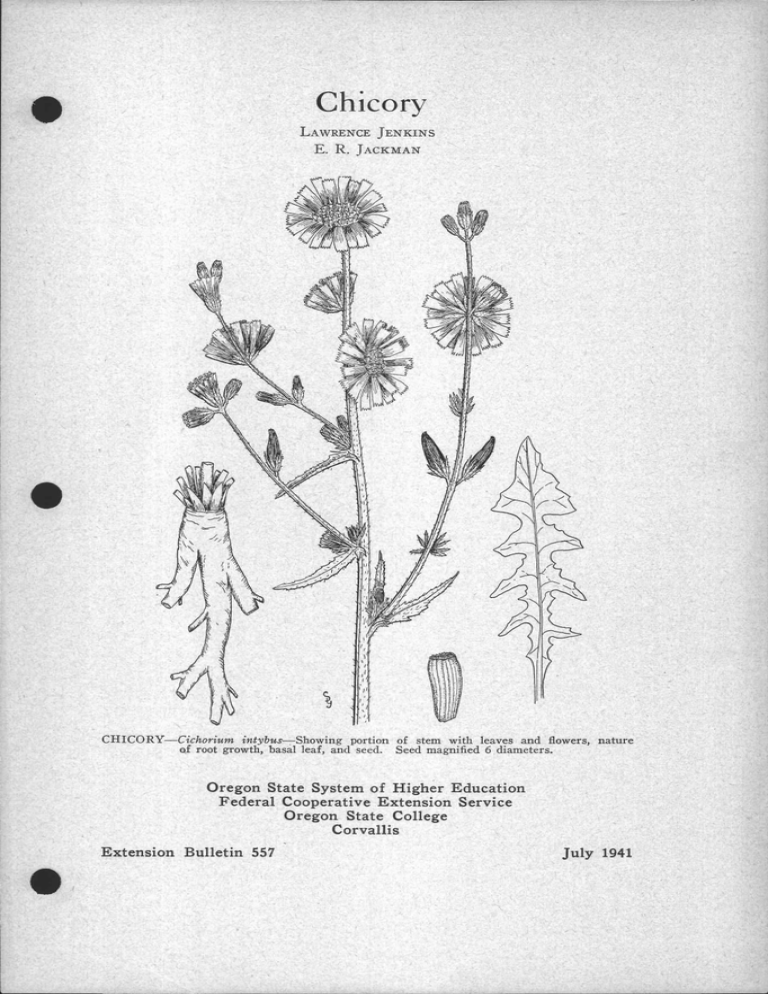
Chicory LAWRENCE JENKINS E. R. JACKMAN CHICORYCichorium intybusShowing portion of stem with leaves and flowers, nature of root growth, basal leaf, and seed. Seed magnified 6 diameters. Oregon State System of Higher Education Federal Cooperative Extension Service Oregon State College Corvallis Extension Bulletin 557 July 1941 Chicory (Cichorium intybus) By LAWRENCE JENKINS and E. R. JACKMAN* Illustrations by Cathrine Davis Young Other names: Succory, Blue sailors, Bunk. Chicory is a perennial most commonly found on poor land along roadsides, in meadows, pastures, and waste places. It reproduces by seed and has a tap root much like dock but generally larger. New shoots are sent up from the crown and not from underground roots as is the case with Canada thistle and many other weeds. Chicory is just a weed, and a persistent one, in this country. It is cultivated for profit in Europe, where the roots are dried and used as a substitute or adulterant for coffee. Leaves are also cooked and eaten as greens. Since its bright blue flowers are attractive, some have planted the weed as an ornamental. It grows from 2 to 7 feet tall. The stems are hollow, slightly hairy, and branched, and become very hard and woody at maturity. Few leaves are present in the upper part of the weed, giving it a coarse stemmy appearance. Flower heads are 1 to 2 inches wide, a deep blue color, and are borne in groups of from 2 to 4. Generally only one flower head in a group is open at a time. Most of them open in bright sunlight and close about noon. Lower leaves closely resemble those of common dandelion. Seed is 1, inch long, dark brown or straw colored, mottled with brown. An average plant will produce about 3,000 seeds. Seed is often carried in crop seed, especially clovers, alfalfa, and grasses. The plant contains a milky juice that is somewhat bitter. Control. Since this weed does not produce underground rootstocks, eradication is not difficult. It does have a persistent crown that will continue to produce new shoots if not destroyed. If just a few weeds are present, the best and cheapest way is to dig out or cut off the root below the crown. Cultivation should be deep and directed at cutting the plant off below the crown and leaving it on the surface to dry out. A cultivated crop will often eradicate the weed in one season if cultivations are frequent. If the ground is hard when the weeds are dug or hoed and there is doubt about destruction, a pinch of sodium chlorate or salt should be put on the cut surface. In some cases the plants can be pulled up ; where this is possible best control can be obtained by pulling the plant root and all when the soil is moist. This is one of a series of 39 bulletins discussing 58 perennial weeds in Oregon and their control. A list of bulletins in this series will be found on the last page of Extension Bulletin 510. The individual bulletins are punched so that several may be bound together if desired. ACKNOWLEDGMENTS: The authors thank Dr. Helen M. Gilkey, Curator of the Herbarium, for reading the manuscript and checking the description of the plant. Professor G. R. Hyslop, In Charge, Division of Plant Industries, made many helpful suggestions. E. R. Jackman is Extension Specialist in Farm Crops and Lawrence Jenkins is Assistant Extension Specialist in Farm Crops at Oregon State College. Cooperative Extension Work in Agriculture and Home Economics Wm. A. Schoenfeld, Director Oregon State College and United States Department of Agriculture, Cooperating Printed and distributed in furtherance of the Acts of Congress of May 8 and June 30, 1914
